The car that Cosworth used to develop its racing engines
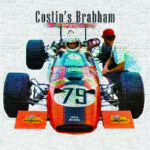
A single-seater Brabham arrives in Singapore for the 1969 Singapore Grand Prix. On the nosecone reads “Costin Brabham”, not the customary Repco Brabham badge seen on other Brabham single-seaters. Many would have already heard of the name Costin, some would even have known the name from Mar-cos, the more learned might even have suspected some involvement from Cos-Worth. Only the owner and his crew had an inkling of this car’s history and now you are going to be privy to that.
COS-WORTH: As fate would have it, the story of Cosworth has strong links with a garage in Hornsey owned by a genius by the name of Colin Chapman. The infectious enthusiasm that existed within Chapman’s garage which homemade kit racing cars called Lotus was the crucible that produced many chance encounters that went on to shape motor sports in the 1960s and 70s.
Such a chance encounter brought David Keith Duckworth and Mike Costin together in the early 1950s. The former arrived as a fresh graduate tasked with fixing Lotus’ infamous five-speed ‘Queer’ box. The other was already Colin Chapman’s right-hand man. Both left because the going got too hectic, typical of the way Chapman operated. Of course there were other reasons and one was that Mike Costin had immediately identified young Keith Duckworth as a “bright bugger, even in that vacation job.” They cliqued, and Cos-Worth was formed in September 1958. Little did they realise that their ubiquitous DFV V8 engines from Cosworth Engineering would become synonymous with Grand Prix victories in Formula 1. Or, that the DFV derivatives would conquer North American single-seater racing.
TEST BED: This “Costin Brabham” that quietly appeared in the grassy paddock on Old Upper Thomson Road’s Rifle Range in Singapore in 1969 had Cosworth embedded in its spaceframe. In later life, it was called “Costin’s Mule”, but during its heyday, chassis F2-12-64, the twelfth BT10 build out of a total of 17 cars, was a heavily-modified Formula 2 Brabham BT10 that Mike Costin himself raced between 1965 and 1967. This was his experimental car, the test bed for Cosworth engine development.
The engineering firm first experimented with the single-camshaft SCA engine, then later on with the Ford 115E-based (found in the Ford Anglia) four-value per cylinder FVA engine. It was from this very exercise that Costin and Duckworth were able to conceptualise the mother of all engines, essentially two FVBs mated together to create the Double-Four-Valve V8, or DFV as it became known, that would make Ford, Lotus and Cosworth names to revere on race tracks around the world.
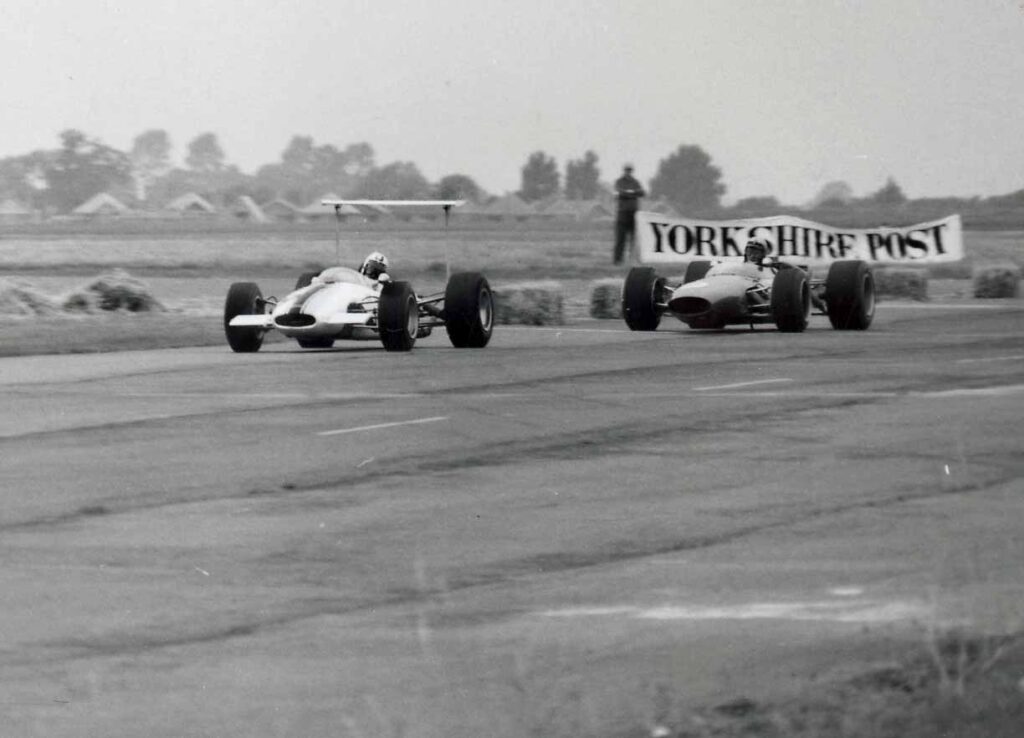
Costin’s Mule, once it had served its purpose, was sold to meat packer Brian Jones of Shardlow Racing for use by up-and-coming English racer Chris Meek. Heavily modified by then, it was clearly too outdated to be a front-runner in Formula 2. Hong Kong-based policeman (and later garage owner) John Macdonald needed something better than the Cooper Formula Junior, Lotus 18 and Lotus 30/40 that he had been struggling with in the South East Asian circuit races. When Shardlow Manor Racing put the Costin Brabham F2 racing car on the market in January 1969, John bought it. The Brabham did not come cheap at £2,750, but John had sworn off fragile Lotus for good.
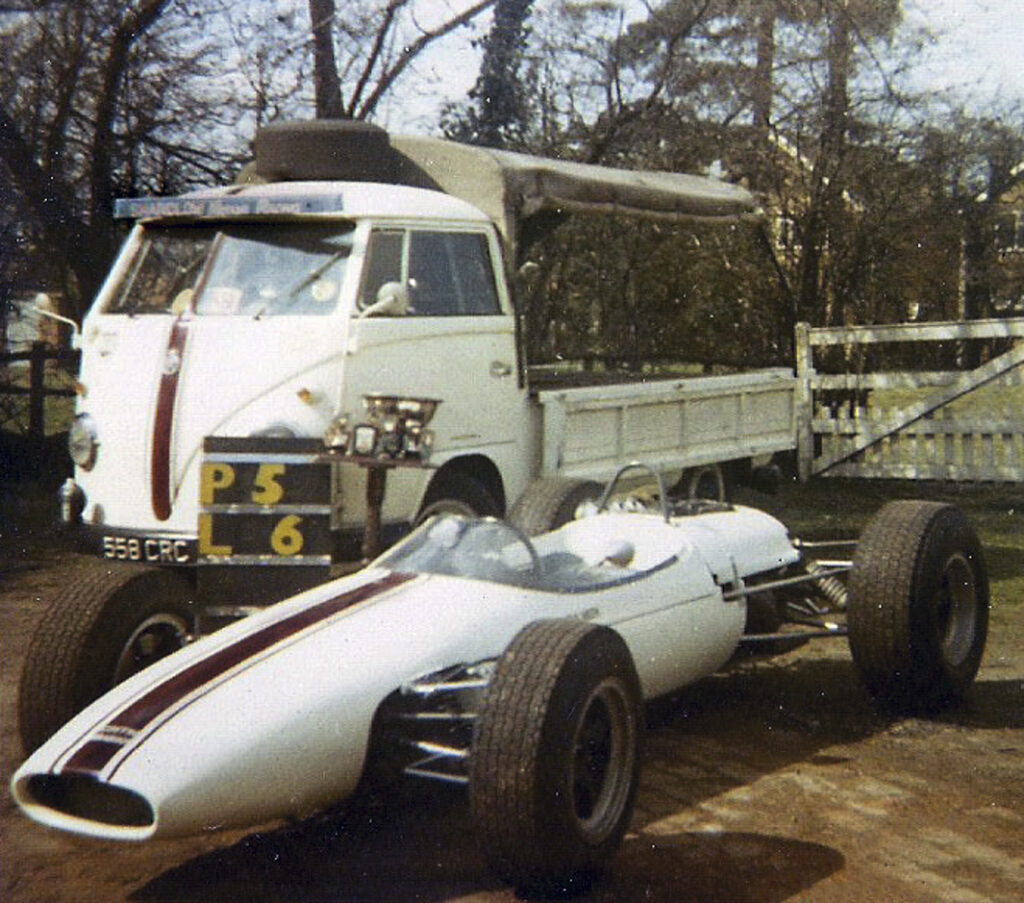
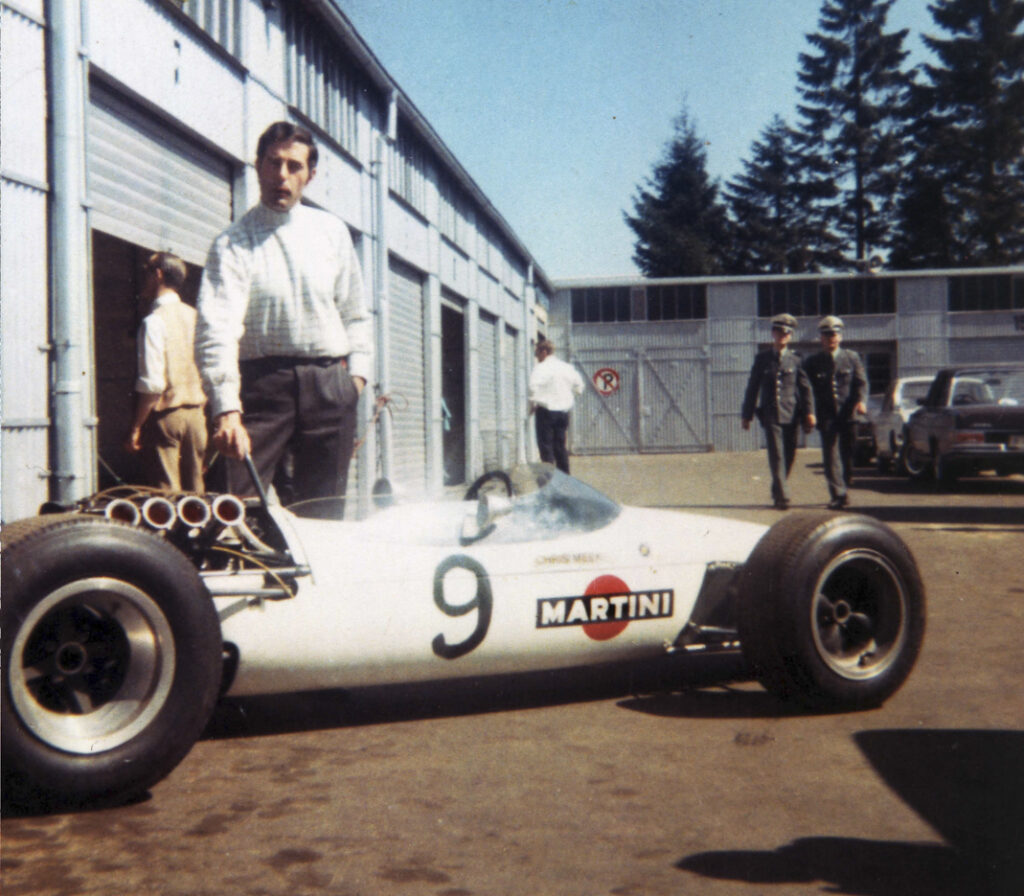
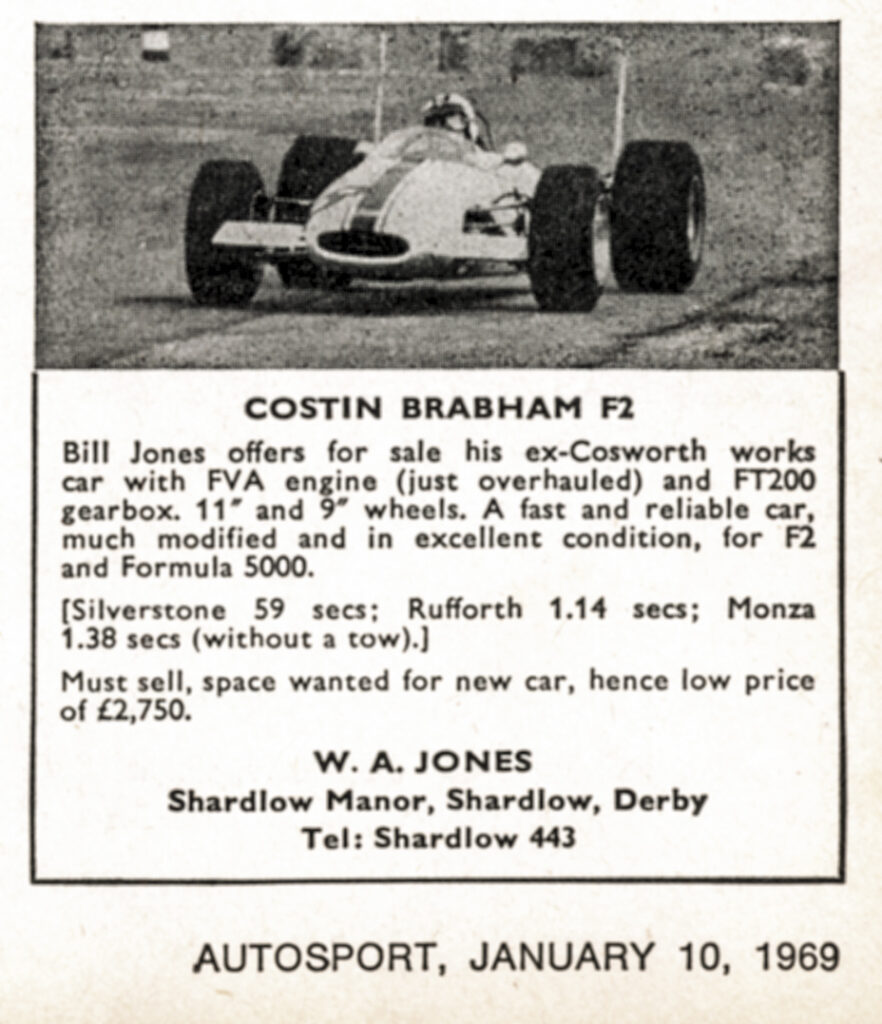
Years later, Mike Costin wrote to John affirming that, “The Brabham…was used as a test bed to try engines and systems…Later we fitted the FVB…1500cc engine which we used to forecast the power of the DFV [the FVB engine being effectively half of a DFV].”
SCHOMAC TIME: The tougher Brabham was race-ready and ideal for the South East Asian and Macau Formula Libre races but had to be shipped directly to Singapore for the 1969 Singapore Grand Prix in Easter, by passing John’s base in Hong Kong due to time constraints and because John had sufficient contacts in the region to ensure that help was forthcoming when it came to setting up the car.
In 1968 John’s friend and backer Fred Scholle offered the finance if John prepared the cars. Fred, according to John, was the real catalyst behind the success of the team. From 1969 that was ‘SCHOMAC RACING’, but Macau was Fred’s primary interest.
He wouldn’t have bought the car sight unseen so one presumes he went to the UK to give it a good once-over, albeit during the European winter, although it does seem unlikely. Fellow racers however remarked that it was a hodgepodge of bits. One even commented that the driver “didn’t know how to start the damn engine.” A new battery was ordered from Rodney Seow at Singapore Motors. Mechanical fuel injection was still a black art then so everyone was on a steep learning curve here. A former competitor recalled, “They had this squirter that shoots fuel into the intake manifolds which they didn’t know how to operate,” recalled a competitor. Cosworth had developed a manual ky-gas plunger pump to “charm the recalcitrant FVAs into life” but John had to figure out his own solution later on. “Otherwise the race was his. Once you started it up, it’s all right,” said that same competitor. Clearly they didn’t know how good [read single minded] John and his crew really were. But racing in the tropical heat and wet was always going to be a gamble.
Practice for the 1969 Singapore Grand Prix was run on Friday, 4th April, in wet conditions, with 24 cars going out. The car arrived with front and rear wings attached though John ran without these at first – and still managed to finish the session fastest – pole for the car on its debut in Asia. Hong Kong’s Albert Poon was second quickest in his Brabham BT21A while 1968 Singapore Grand Prix winner Garrie Cooper was third in his new Elfin 600C, ahead of Kiwi Graeme Lawrence in a McLaren M4A FVA. The Elfin and McLaren were ahead of the game with aerofoils front and rear.
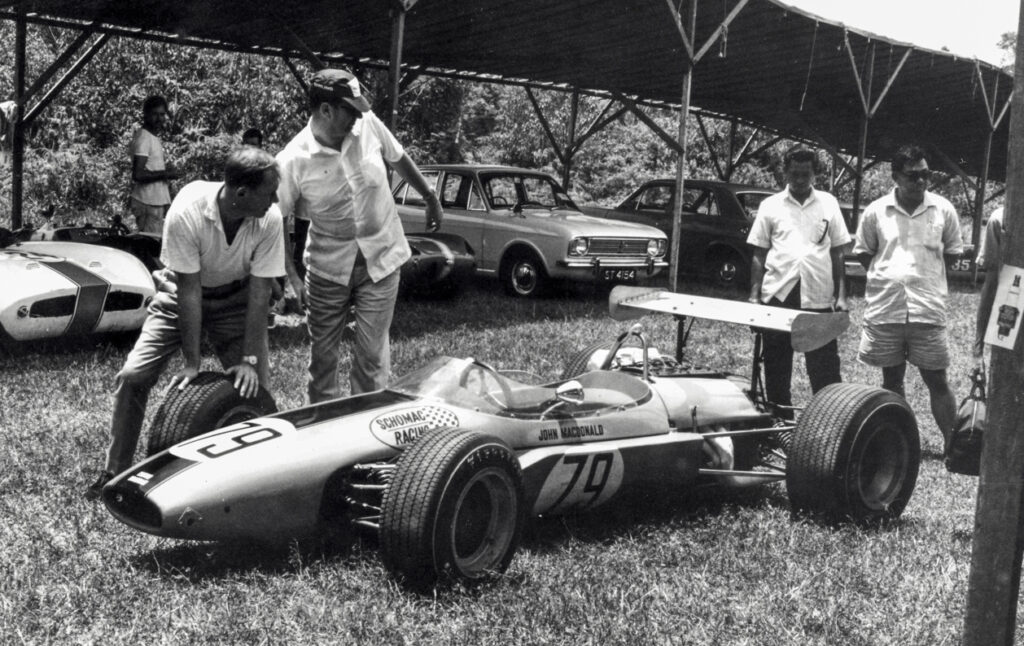
John was unfortunate to miss out on the start as pole sitter after the car’s ignition module got soaked in the rain. The Brabham wasn’t the oldest car on the grid but the final results after 181 (60 laps) were revealing:–
First: Graeme Lawrence – McLaren M4A Cosworth FVA
Second: Roly Levis – Brabham BT23C FVA (FTD and new course record 1:59.6)
Third: Tony Maw – Elfin Mk2B 100 1598cc
Fourth: Malcolm Ramsay – Elfin 300 1780cc Twin Cam
Fifth: Lionel Chan – Merlyn Mk5/7 Ford 1500cc
Sixth: Albert Poon – Brabham BT21A
Seventh: Hardy Burmester – Lotus 23B
It was no better the following week in Selangor for the Selangor Grand Prix, though this time it was battery charging issues that plagued John. The fuel pump consumed a fair bit of energy to power the injection unit. In Macau in November, John put the Brabham on the front row but fuel pump issues scuppered his race.
In 1970, the following year, John and crew came better prepared. In the Singapore Grand Prix in late March, the car finished third in the 20-lap Preliminary Grand Prix and second in the main 40-lap race. In Selangor the following weekend, the Brabham continued to perform well, finishing second in torrential rain. At the Malaysian Grand Prix in September, the Brabham started on pole and went on to record its first Grand Prix victory. Granted there wasn’t an outstanding grid of regional champions to cause John any worries and he finished three laps ahead of second place Tony Maw. Macau was another matter altogether.
One of the few racers who also participated in the motorcycle races, John had an unfortunate accident when his engine seized while he led in his new Yamaha TR2 at Yacht Club Bend during the Motorcycle Grand Prix. His arms remained in plaster for the best part of three months after an operation to put a collection of steel pins into the broken bones.
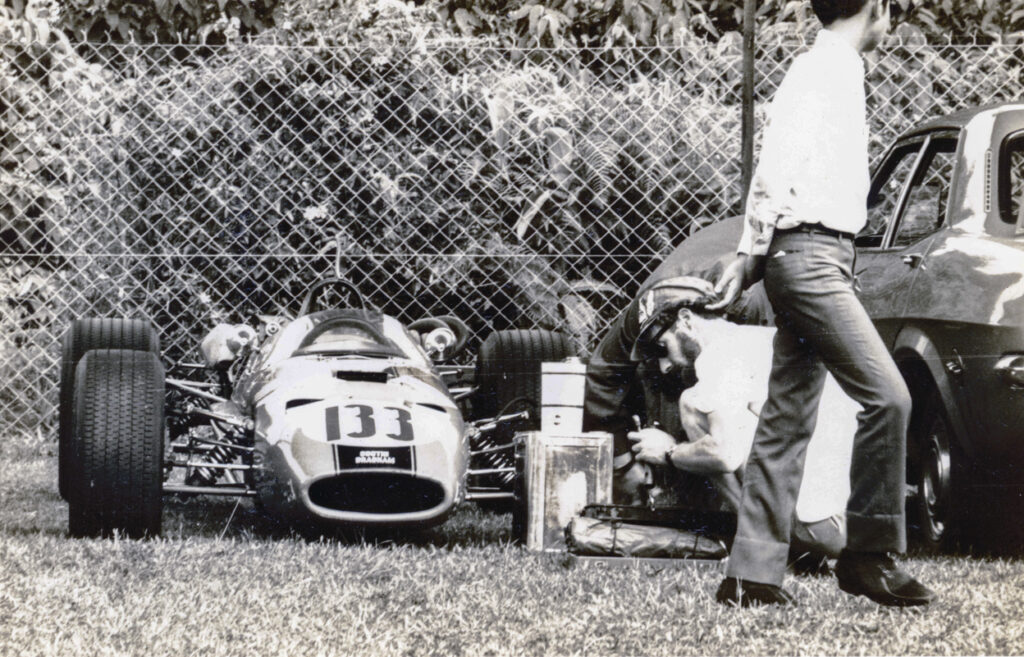
POLE DANCING: John’s injuries couldn’t keep him away from the Singapore Grand Prix in 1971. The Brabham now had a new Vegantune Lotus Twin Cam engine with Lucas fuel injection to meet the new regulations banning four-valve-a-cylinder heads. John’s hands were however still raw from the injuries sustained in Macau.
Still, it didn’t stop the Hong Kong racer from winning the Preliminary 20-lap race. The effect of this was that his hands were now severely blistered and he confided to race engineer Angus Lamont that his arms were hurting so much it was all he could do to hold on to finish the race.
The prospect of a long race wasn’t appealing and it affected John badly – he was in much pain. No matter, he finished a commendable fourth. His Lotus 47 didn’t fare too well in the Sports Car race held earlier – it caught fire. The following Selangor Grand Prix weekend, the Brabham finished fifth.
The Brabham was left in the care of Keith Wilton-Jones, his friend in Malaysia, in anticipation of the Malaysian Grand Prix in September. John was now back up to speed. While New Zealander Graeme Lawrence led for the first nine laps of the September Grand Prix, he was forced to pit and John seized the opportunity and won, finishing in front of top local driver Sonny Rajah with about a minute to spare.
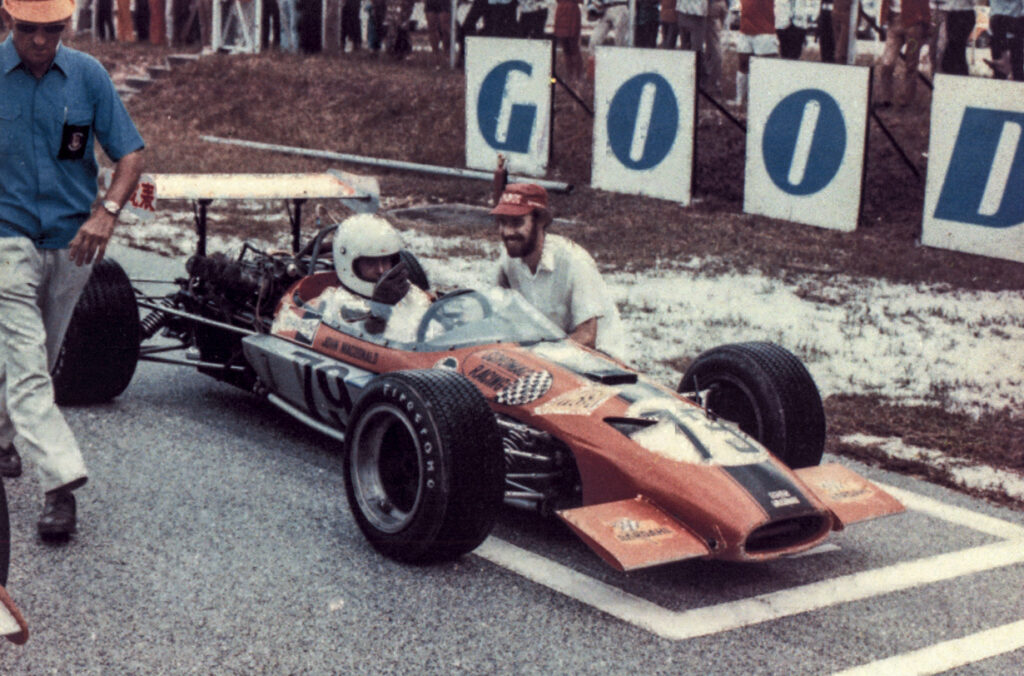
Macau should have been a breeze for John and the Twin Cam BT10. He was on pole with a magnificent practice time that was 7.37 seconds quicker than Garrie Cooper in second place! However, in the race it was not to be. The universal joint on the right-hand drive shaft broke on lap 2, just by Teddy Yip’s yard. It was a bitter blow. John’s race engineer Angus Lamont recalls how disappointed they all were because John’s first lap from the standing start was quicker than the winner’s fastest lap!
The Brabham continued to soldier on with John campaigning it with some success around the Far East circuits up to the autumn of 1975. Throughout its Asian history, it was run with three different engines – first with the Cosworth FVA engine that was in the car when he bought it and, from 1971 onwards, when the regulations were changed to outlaw 4-valve engines, with a Vegantune Ford Twin-cam. Later on John ran it with a Brian Hart-engineered Ford Twin Cam.
BROOMSTICKS: When you did not have the budget to buy a new race car, you develop what you have. The BT10 was fettled and fettled until it was able to compete against the newer monocoque race cars which had far better aerodynamics. Extra fuel tanks were copied from Mario Andretti’s Indianapolis car to accommodate the much longer races at Macau, Singapore and Batu Tiga in Selangor. Fabricated from aluminium, John pressure-filled each tank with water to stretch them even more. They “got about 2.5 to 3 gallons that way,” he recalled with amusement. This made the difference between having to refuel mid-race and completing the race on a tankful of gas. I queried the sanity of such a move when I visited John at his home in Andorra many years ago and had a close look at the aluminium pannier tanks. “Huh?, he snorted. Do you want to be safe or do you want to race!”
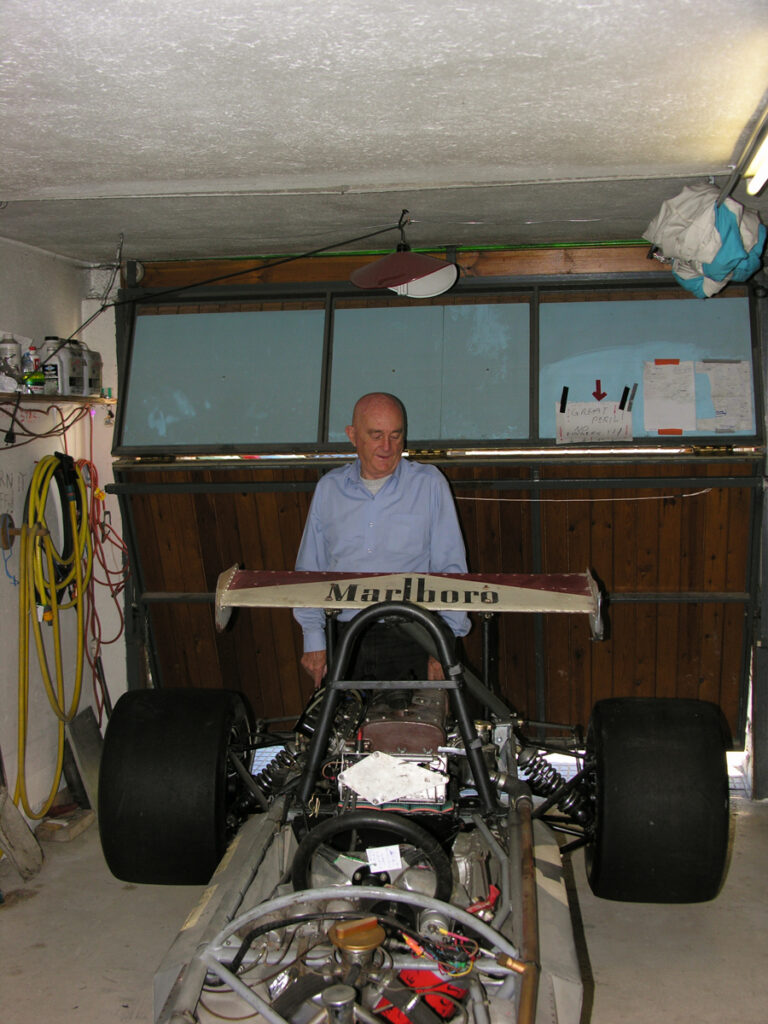
Having the fastest and most reliable engine mattered, but the newer cars had aero aids to keep them firmly planted on the ground in 1969. It was all very new to single-seaters. Out came a broomstick which was used to attach the front wings to the old bodywork. John’s trusted friend Angus Lamont remembered fitting and removing the front wings in 1969 in Singapore just to match the newer single-seaters, although his star driver initially saw these appendages as “useless around the Singapore circuit.” Rodney Seow, Singapore’s last local Grand Prix winner concurred, “…I don’t know what advantage they would give, only in the back-leg to give it the downforce. The difference wasn’t that much. On the straight, you would have had more drag, more detrimental than cornering force.”
Ultimately, even full wings weren’t enough to match the advances made in race car and tyre design, but this one soldiered on and on, in both the circuit races as well as at club sprints and hill climbs in Hong Kong, where John resided. And when he tried to sell it to raise some money, there were no takers. Such is the life of a race car.
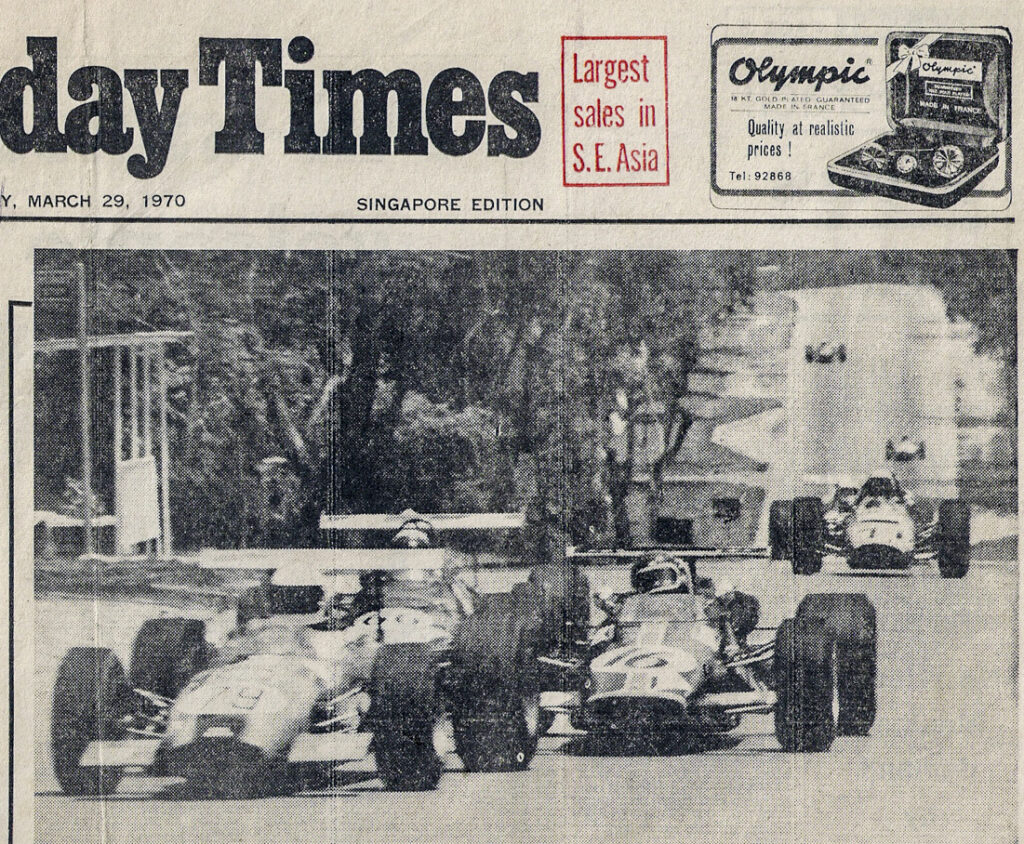
That the Brabham BT10 led a charmed life in the hands of John Macdonald is without doubt. No crashes and a fantastic record of Grand Prix wins in the region was capped with a final hoorah in the Philippine National Championships in 1974 with six wins out of seven. When John semi-retired to the tax-free haven of Andorra, the car went with him. When I visited him in 2005, I very nearly purchased this well-preserved BT10 – complete with Cathay Pacific livery and a pair of Cosworth FVA motors and FT200 gearboxes. The thought of having to strip down and rebuild an FVA motor put me off and I stuck with my 1966 twin-cam Brabham BT18 instead.
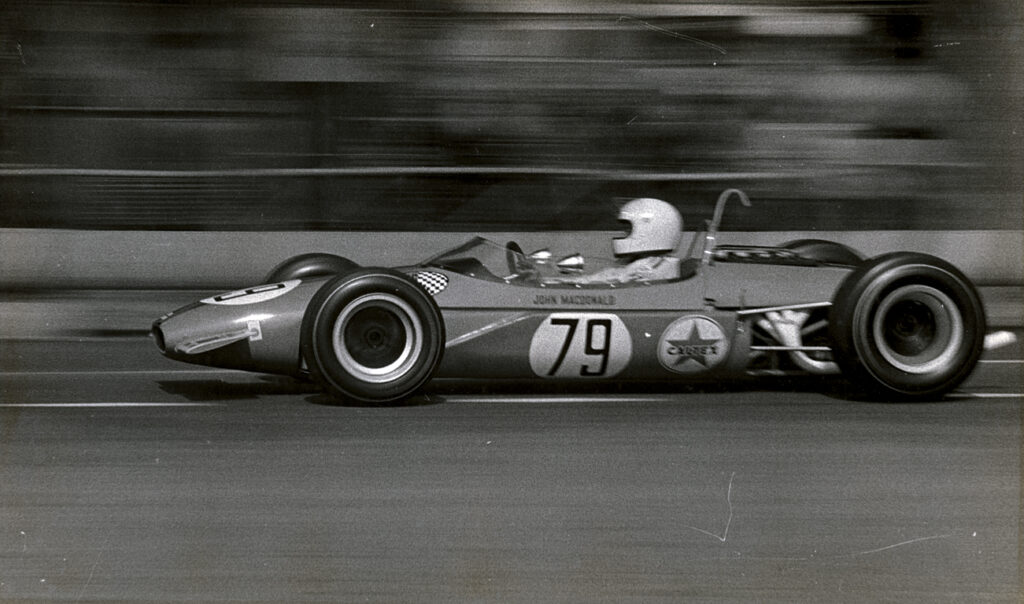
EARLY HISTORY: Norman Burr mentions the car in his book First Principles – The Official Biography of Keith Duckworth OBE (Veloce Publishing, April 2015. URL Link ). “As soon as the FVA was signed off, work began on a one-off derivative to aid design of the DFV, a 1500cc version known as the FVB. This was then fitted in place of the SCB in the Brabham BT10 that Cosworth used as a test vehicle. That summer [1965] Mike [Costin] began test driving, and entering the car in Formula Libre (FL) events, partly to learn and partly for fun…and demonstrated that his knowledge was not merely theoretical at the 1966 Daily Mail International Trophy F2 race at Silverstone, when he put the Brabham on the front row next to Jim Clark, and in front of several illustrious names. Sadly, the race was rained off. …Up until recently, Brian Hart had occasionally shared the driving…” This would have been in 1964 with the 1-litre SCA and later with the 1.5-litre SCB power plants.
This Brabham first ran with the SCA engine installed in the Gold Cup race at Oulton Park, 19th September 1964 with Cosworth employee Brian Hart driving, then again on 26th September at the Vanwall Trophy Race at Snetterton with Mike Costin at the wheel (where the SCA-engined BT10 finished 4th). Its next appearance was in 1965 at the BARC 200 at Silverstone on 20 March 1965 where Mike Costin won from pole position, this being Cosworth Engineering’s last entry of the car with the 1,000cc single overhead camshaft SCA. According to Mike Costin, the car was used for the development of the fuel injection system on the SCA and he usually ran in this configuration, later on with the single overhead cam SCB, which was a 1498cc motor putting out 175bhp. However, Cosworth also used the car for FVA development in 1966 when it got outright lap records at Silverstone and at the Brands Hatch Boxing Day meetings, testing the FVB motor (with a lower engine capacity at 1500cc). It seems that several well-known racing drivers were given the opportunity to test this Brabham during Mike Costin’s development program for Cosworth engines.
The Brabham also raced in Europe – Nürburgring and Hockenheim in Germany, Jarama in Spain, Zolder in Belgium, and Monza and Vallelunga in Italy but all this is already well known amongst motor sports experts. The car’s Asian record however, may be considered somewhat irrelevant to the international community but is nonetheless interesting, if only for the fact that both car and owner were based in Hong Kong and there was only one country in the entire region with a permanent circuit (The Batu Tiga Circuit in Selangor, Malaysia). Not counting sprints, slaloms and hill climbs (all in Hong Kong), this car lined up for at least 21 circuit events in Macau, Manila, Selangor and Singapore between 1969 and 1974.
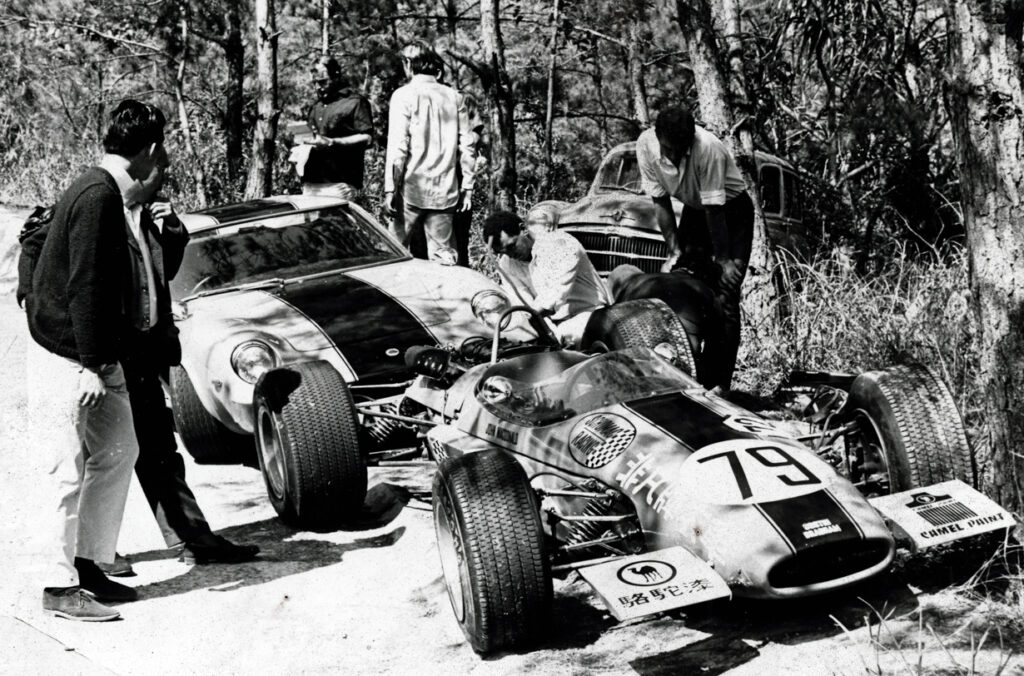
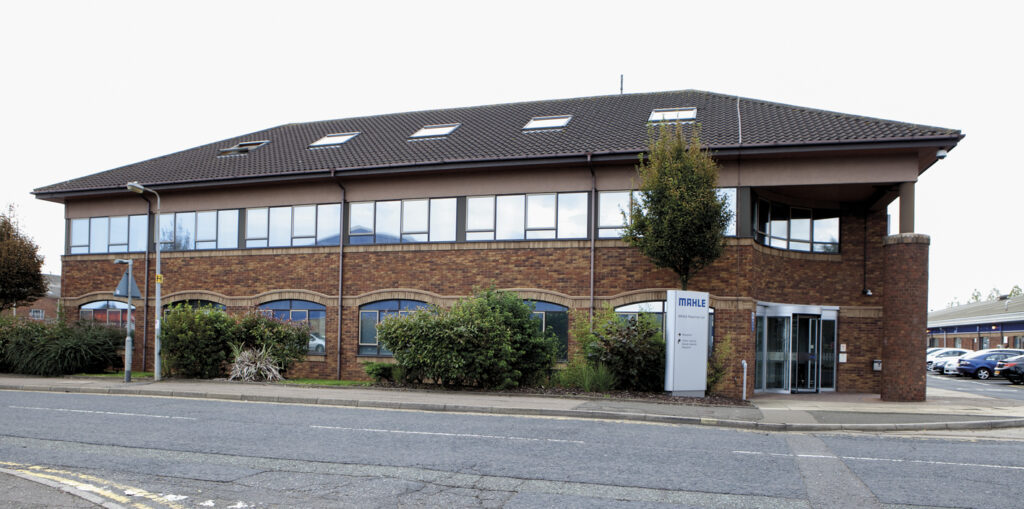
As the international experts will be well versed with all the BT10’s results, this article lists just the Asian race results for BT10 F2-12-64 between the years it raced in that part of the world (1969-1974)
6 April 1969 – Singapore Grand Prix – 1594cc Cosworth FVA – Pole, DNS
13 April 1969 – Selangor Grand Prix – 1594cc Cosworth FVA – 4th on grid, DNF
16 November 1969 – Macau Grand Prix – 1594cc Cosworth FVA – 2nd on grid, 7th overall finish
30 November 1969 – Hong Kong Double Sprint, Sek Kong Airstrip, New Territories – 1594cc Cosworth FVA – FTD
4 January 1970 – Hong Kong – Round 1 Golden Hill Hill Climb – 1594cc Cosworth FVA – FTD (Hill record)
18 January 1970 – Hong Kong – Round 2 Wong Nai Chung Hill Climb – 1594cc Cosworth FVA – FTD (Hill Record)
15 February 1970 – Hong Kong Wong Nai Chung Hill Climb – 1594cc Cosworth FVA – FTD
27 March 1970 – Singapore Grand Prix Preliminary 20 laps – 1594cc Cosworth FVA – 3rd
29 March 1970 – Singapore Grand Prix 40 laps – 1594cc Cosworth FVA – 3rd on grid, 2nd overall
5 April 1970 – Selangor Grand Prix 40 laps – 1594cc Cosworth FVA – 4th on grid, 2nd overall
7 June 1970 – Hong Kong Spring Slalom, Sek Kong Airstrip, NT, 1594cc Cosworth FVA – FTD
8 June 1970 – Hong Kong Summer Slalom, Sek Kong Airstrip, NT, 1594cc Cosworth FVA – FTD
13 September 1970 – Malaysian Grand Prix 50 laps – 1594cc Cosworth FVA – Pole, Win
29 November 1970 -Macau Grand Prix 45 laps – 1594cc Cosworth FVA – 3rd on grid, DNS
9 April 1971- Singapore Grand Prix Preliminary 20 laps – 1594cc Vegantune Ford Twin Cam – Win
11 April 1971- Singapore Grand Prix 40 laps – 1594cc Vegantune Ford Twin Cam – Pole, 4th overall
18 April 1971 – Selangor Grand Prix 50 laps – 1594cc Vegantune Ford Twin Cam – 5th overall
5 September 1971 – Malaysian Grand Prix 50 laps – 1594cc Vegantune Ford Twin Cam – Pole, Win
21 November 1971 – Macau Grand Prix 45 laps – 1594cc Vegantune Ford Twin Cam – Pole, DNF
30 January 1972 – 2nd ARAP Philippines Greenhills Formula Libre Races 50 laps – 1594cc Vegantune Ford Twin Cam – Pole, 5th overall (and lap record)
Note: For the South East Asian races in 1972, John raced his Rondel Brabham BT36/2
2 June 1974 – Philippines – Race 1 – Marlboro Championship Trail – Greenhills Circuit – Pole, Win
7 July 1974 – Philippines – Race 2 – Marlboro Championship Trail – Greenhills Circuit – Pole, Win
26 July 1974 – Philippines – Race 4 – Marlboro Championship Trail – Greenhills Circuit – Pole, Win
6 October 1974 – Philippines – Race 5 – Marlboro Championship Trail – Greenhills Circuit – Pole, Win
15 December 1974 – Philippines – Race 6 – Marlboro Championship Trail – Greenhills Circuit – Pole, Win
30 December 1974 – Philippines – Race 7 – Marlboro Championship Trail – Greenhills Circuit – Pole, Win.
[In the Philippine races for 1974, the BT10 was run with a 1594cc Hart Ford Twin-Cam motor while his Brabham BT40 (which also raced at the 4th ARAP Philippines Greenhills Grand Prix on 20 October 1974), was run with a 1594cc Camlex Ford Twin Cam, an engine John had developed in his workshop in Hong Kong. The Brabham BT10 does not appear to have ever been run with the fuel injected, alloy block Camlex Ford Twin Cam.

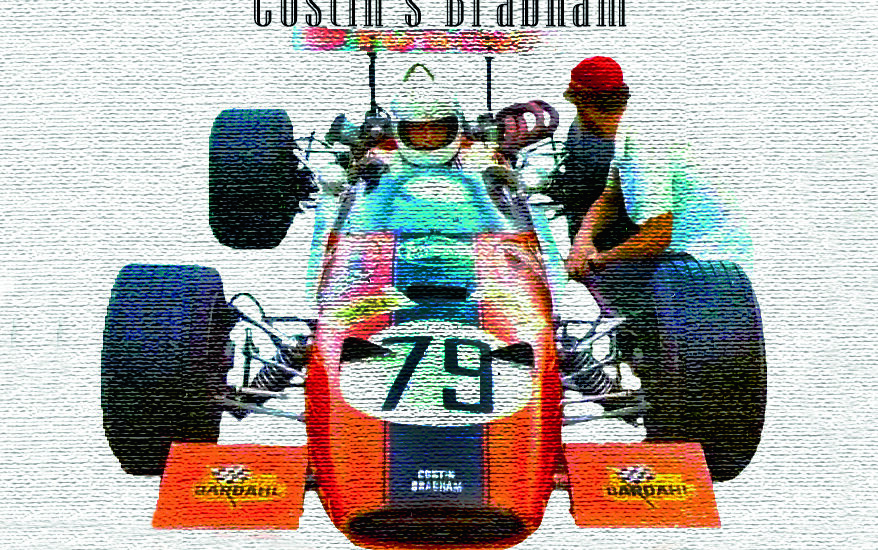
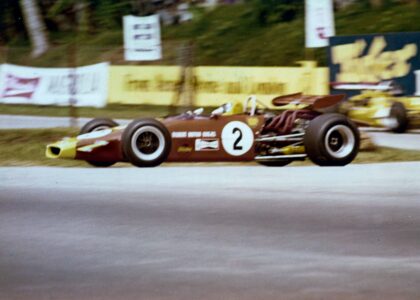
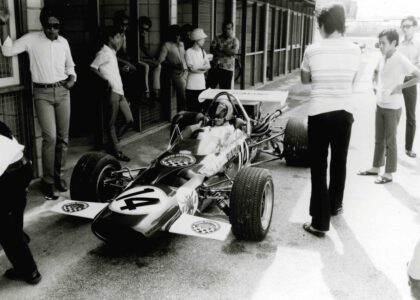
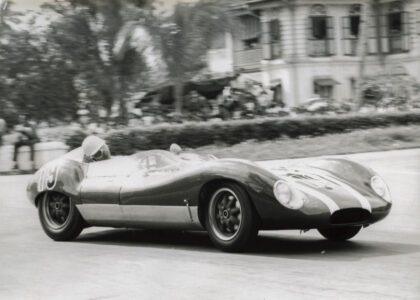
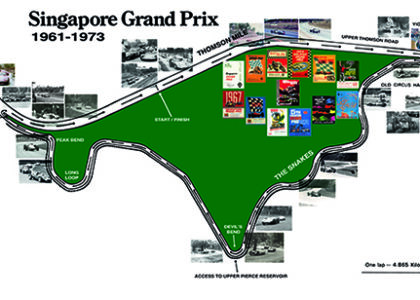
One thought on “COSTIN’S MULE”
Comments are closed.